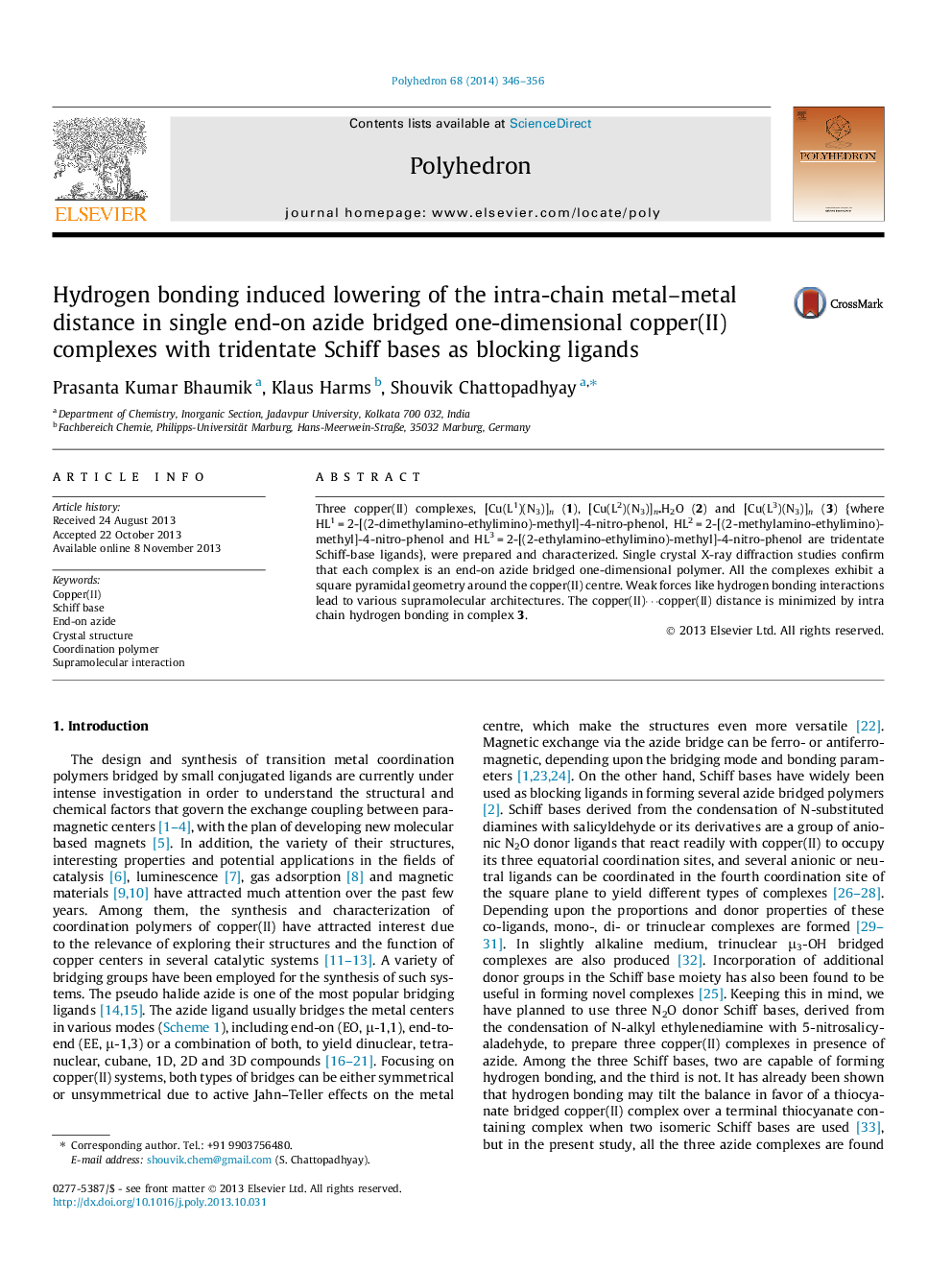| Article ID | Journal | Published Year | Pages | File Type |
|---|---|---|---|---|
| 1336623 | Polyhedron | 2014 | 11 Pages |
Three copper(II) complexes, [Cu(L1)(N3)]n (1), [Cu(L2)(N3)]n.H2O (2) and [Cu(L3)(N3)]n (3) {where HL1 = 2-[(2-dimethylamino-ethylimino)-methyl]-4-nitro-phenol, HL2 = 2-[(2-methylamino-ethylimino)-methyl]-4-nitro-phenol and HL3 = 2-[(2-ethylamino-ethylimino)-methyl]-4-nitro-phenol are tridentate Schiff-base ligands}, were prepared and characterized. Single crystal X-ray diffraction studies confirm that each complex is an end-on azide bridged one-dimensional polymer. All the complexes exhibit a square pyramidal geometry around the copper(II) centre. Weak forces like hydrogen bonding interactions lead to various supramolecular architectures. The copper(II)⋯copper(II) distance is minimized by intra chain hydrogen bonding in complex 3.
Graphical abstractThree copper(II) complexes, [Cu(L1)(N3)]n (1), [Cu(L2)(N3)]n·H2O (2) and [Cu(L3)(N3)]n {where HL1 = 2-[(2-dimethylamino-ethylimino)-methyl]-4-nitro-phenol, HL2 = 2-[(2-methylamino-ethylimino)-methyl]-4-nitro-phenol and HL3 = 2-[(2-ethylamino-ethylimino)-methyl]-4-nitro-phenol are tridentate Schiff-base ligands}, were synthesized and characterized. All the complexes feature single end-on azide bridged one-dimensional chains. The copper(II)⋯copper(II) distance is minimized by intra-chain hydrogen bonding.Figure optionsDownload full-size imageDownload as PowerPoint slide
